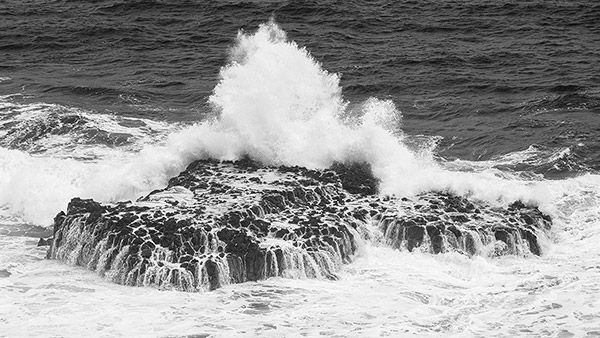Splash, Victoria, Australia
(Click image to enlarge)
Ocean waves carry lots of energy, even when they are relatively small. This energy does not interact with the ocean floor when water depth is greater than half the distance between wave crests, known as the wavelength. Under these conditions the wavelength remains constant as the waves travel toward the shore. As they get closer to shore the depth decreases, waves begin to interact with the ocean floor, the wavelength and velocity decrease while the wave height (amplitude) increases.
When a small swell passes over an area where submerged rock platforms or other large geological features cause a sudden decrease in the water's depth, a small swell will increase dramatically in height. Simplistically, all of that energy must go somewhere. It lifts the water, which in these amounts is incredibly heavy.
As the tide changes, all or parts of the rock platforms mentioned above can become level with the water's surface or exposed above it. If the ocean facing side of the rock platform is vertical, or nearly so, the water depth encountered by traveling waves decreases to zero in a fraction of a second. As before, all of that energy must go somewhere, but now it must do so very quickly.
The large 10.5 meter (34 foot) wide rock this photograph is higher part of a much wider volcanic rock platform that is still submerged. Large waves appear as if by magic along the submerged edge on either side of the exposed rock. Wave segments that encounter the rock essentially explode, releasing a huge amount of energy in a very short time.
